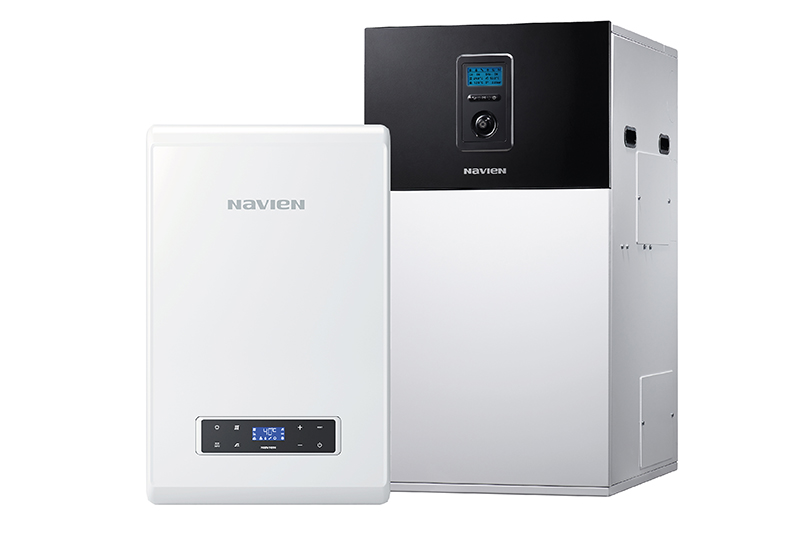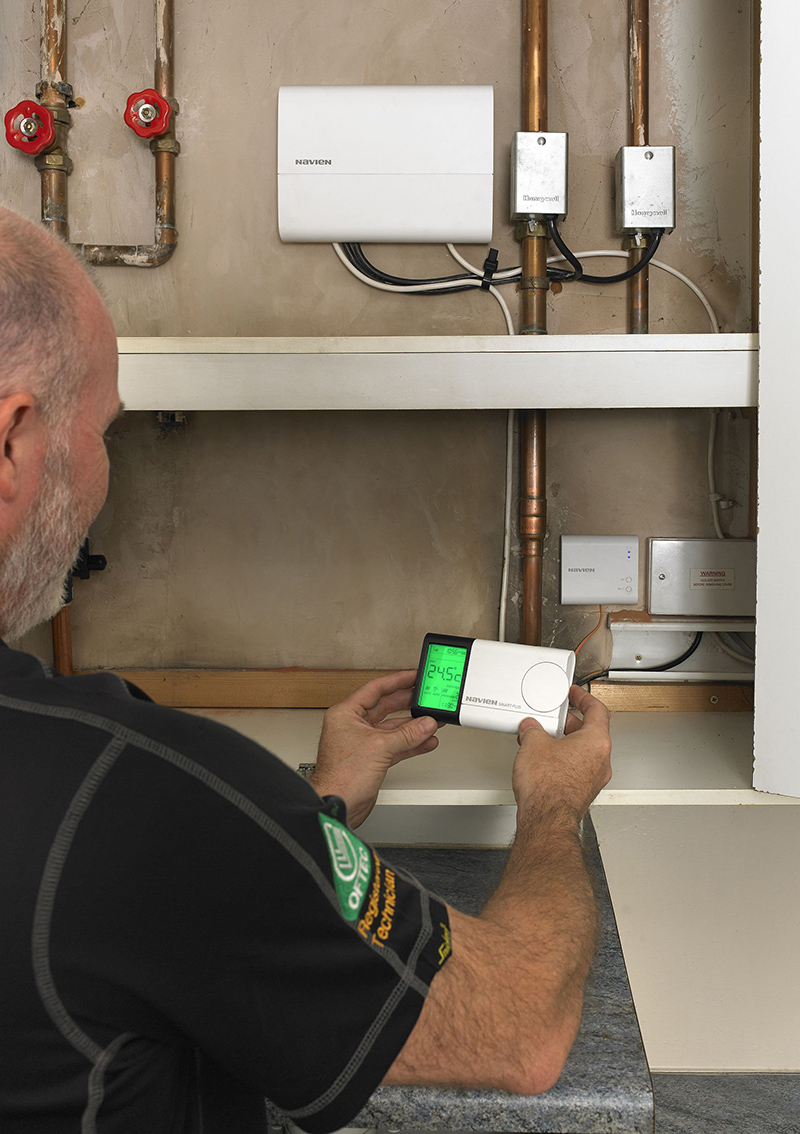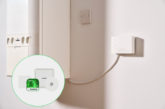
When it comes to room heating, there are many low temperature systems available to maximise efficiency and reduce running costs. However, while there are many different products for installers to consider, oil and gas boilers remain the most flexible and adaptive heating technology of choice, argues Sean Keleher, National Technical Manager at Navien.
Traditionally, room heating consists of an oil or gas boiler alongside a system of radiators. However, as homes become increasingly well insulated, low temperature heating circuits (LTHC) are gaining in popularity. This has led to a trend in emitters such as underfloor heating (UFH) and fan convectors being installed in a variety of properties, particularly in the new build sector.
While the supply temperature in a traditional central heating system can range from 75°C and 85°C, this decreases to anywhere between 35°C and 55°C when using low temperature heating. This, of course, brings with it many economic and environmental advantages.
Our experience in producing boilers in Korea for over 40 years, where the majority of properties utilise UFH, puts us in a prime position for working with low temperature room heating systems. Oil and gas boilers can be easily set with a lower maximum temperature for use with UFH or fan convectors, provided they are the only emitters attached to the system. Otherwise, there are external underfloor blending kits, which can utilise higher boiler temperatures for some radiators on the system, while simultaneously blending heat down for an underfloor circuit (used by radiators upstairs and UFH downstairs, for example). Most installations and boilers would work in this way, with the simple addition of a blending kit from the UFH manufacturers.
From a technical perspective, if a boiler has a lower maximum set point (for example, 70°C), the return temperatures would also be reduced in turn. Return temperatures below 54°C will enable the boiler to go into condensing mode; in fact, the lower the return temperature, the more the boiler will condense – and the greater the efficiencies gained as a result.
Radiator options
Of course, advances in radiator technology also have a role to play. While the traditional, steel panel models are not going away anytime soon, there are also aluminium models available capable of operating at lower water temperatures. This is attributed to them having significantly lower water content than their steel panel counterparts, while the low thermal inertia of an aluminium radiator can also see it heat up approximately three times faster.
This offers many benefits from a refurbishment or system upgrade perspective, as the boiler can be replaced with the latest energy efficient model without having to have all the emitters changed. As a result, there is less disruption for end users – while also the cheaper option as opposed to having a whole house renovation.
Blue flame burners
Of course, as the industry looks towards achieving Net Zero carbon emissions, sustainability is paramount. This has led to the introduction of blue flame burners in oil boilers, as they produce half the NOx emissions of their yellow flame counterparts. This is particularly significant for properties situated in rural areas, where there are approximately 1.5 million homes reliant on oil for heating and hot water needs. Here, upgrading to a modern oil boiler, such as our own LCB700 model, allows a property to utilise the latest blue flame burner technology to maximise energy efficiency with existing room emitters. By utilising these cleaner burners, blue flame boilers allow heating engineers to provide their customers with highly efficient oil boilers boasting significantly lower NOx emissions.
Blue flame technology operates on the principle of converting heating oil to a vaporised spray at high pressure through a specially designed nozzle. This is then premixed with the air required for combustion, before being drawn in through the burner, resulting in a clean blue flame, which has much lower NOx emissions than traditional, yellow flamed models. As a result, installers can provide their customers with a more sustainable oil boiler when they are looking for a like-for-like replacement – which is also more than capable of running at lower water temperatures, should the property be suitable.
With blue flame the obvious choice for oil boilers, Navien’s own blue flame technology guarantees efficiency and ultra-low NOx emissions (57mg/kWh). In fact, we recognise the importance of blue flame so much, we only manufacture boilers with this technology. These units are also “OpenTherm” ready, so allow instant access to the latest control technology, at minimum disruption to homeowners, while reducing installation costs and overall energy bills.
As a result, using these models in conjunction with our Smart Plus control pack provides an overall, industry leading A+ ErP energy rating. Plus, the boilers themselves can also be sited outside, where they are still able to operate effectively even at sub-zero temperatures.
So, as the industry looks towards a low carbon future, high efficiency boilers still have a vital role to play, no matter what emitters are present on a system. Regardless of whether a property has radiators, underfloor heating or fan convectors, installers should be aware modern oil and gas boilers are still more than capable of ensuring ample levels of heat for a variety of applications.














